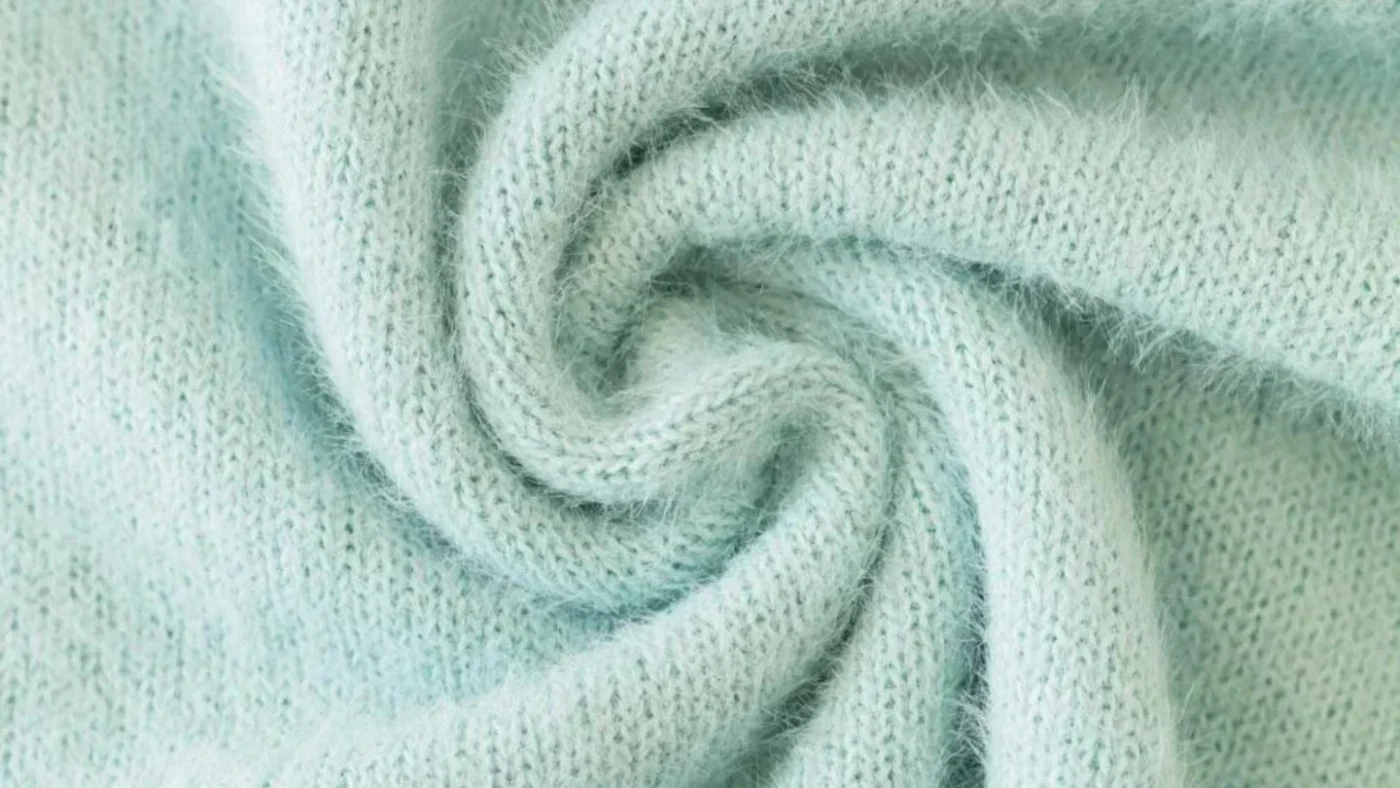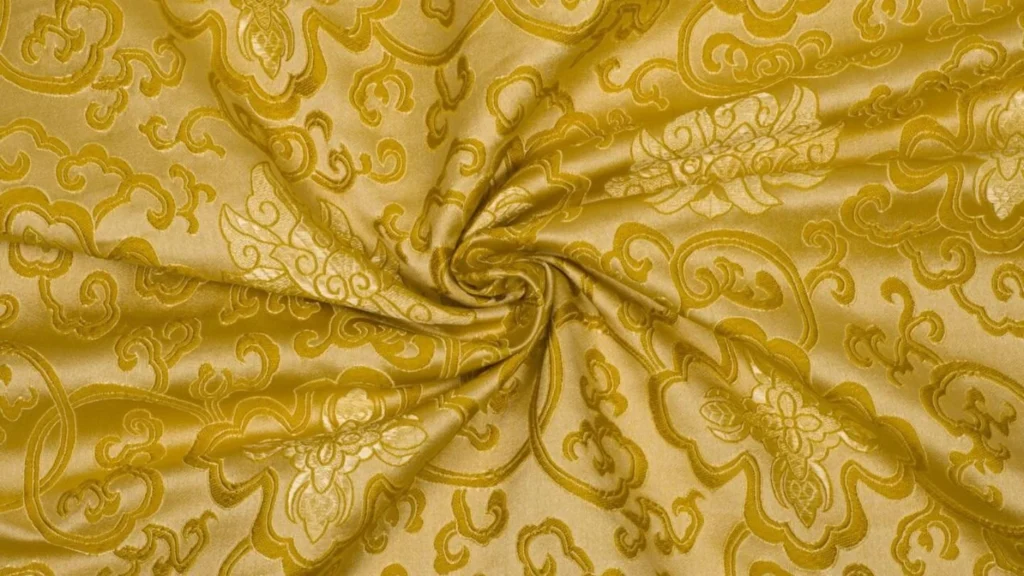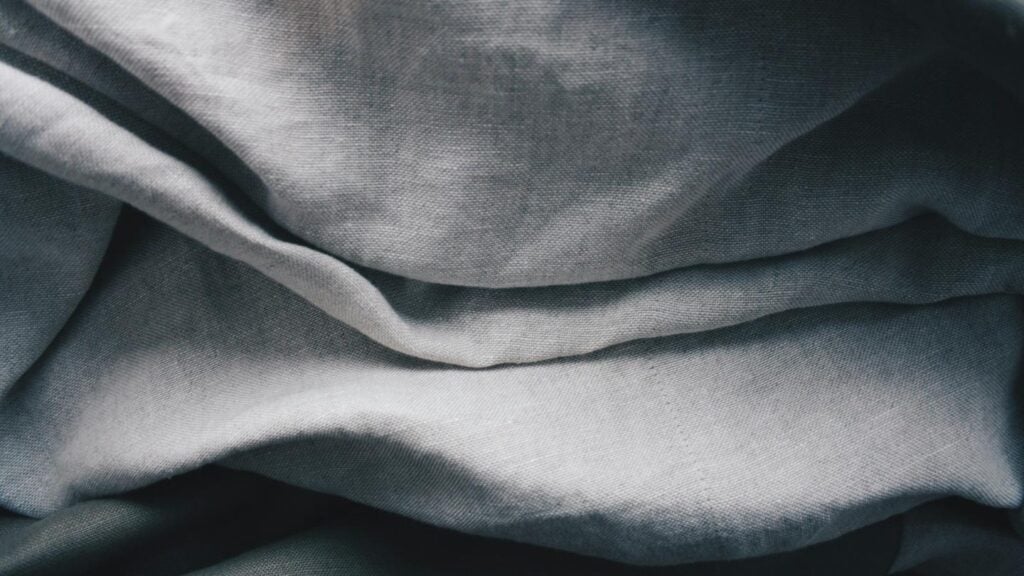2 – Angora Wool Fabric Composition
3 – Angora Wool Fabric vs Other Fabrics
4 – How Angora Wool Fabric Is Manufactured
5 – Common Uses in Fashion
6 – Understanding the Environmental Impact of Angora Wool Fabric
7 – Exploring Price Points and Value for Money
8 – Conclusion
9 – FAQs
What is Angora Wool Fabric?
Angora wool fabric is a luxurious and lightweight textile made from the soft, downy undercoat of Angora rabbits. Known for its extreme softness, warmth, and lightness, Angora wool has been highly prized for centuries, especially in the fashion world. The unique fibers are silky and fine, making the fabric extremely comfortable to wear, even against the most sensitive skin. Unlike other types of wool, Angora wool is finer and fluffier, with a natural sheen that gives it a luxurious appearance.
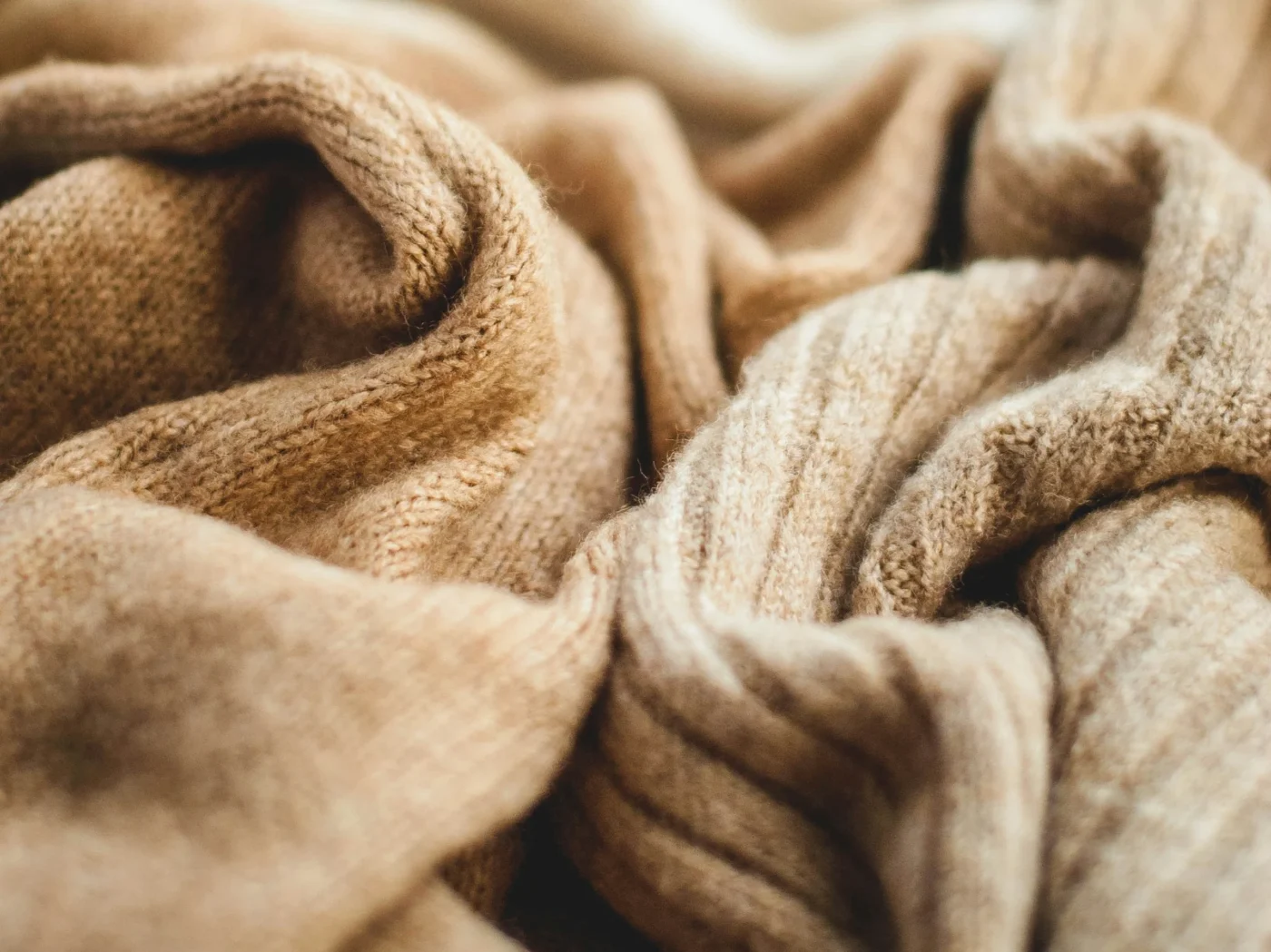
Key Features of Angora Wool Fabric:
- Softness: Angora wool is known for being one of the softest natural fibers, providing a comfortable feel even for those with sensitive skin.
- Lightweight and Warm: Despite being light in weight, Angora wool offers excellent insulation due to its unique structure, trapping heat in cold conditions while remaining breathable in warmer climates.
- Natural Shine: The fibers of Angora wool naturally reflect light, adding a subtle shine that enhances the elegance of garments made from the fabric.
Angora wool fabric is often used in luxury garments, including sweaters, scarves, and coats, as well as in home textiles like blankets and throws. It’s revered for its ability to provide warmth without the heaviness of traditional wool, making it a favored choice for colder weather apparel. Additionally, Angora wool is a popular fiber in the luxury fashion industry, valued for its soft texture and its ability to be spun into fine, delicate threads for high-end knitwear and accessories.
Angora Wool Fabric Composition
The composition of Angora wool fabric is what gives it its luxurious softness and lightweight warmth. Unlike other types of wool, which are derived from sheep, Angora wool comes from the soft undercoat of the Angora rabbit. The fibers are finer and lighter than most other wool types, making them particularly gentle on the skin and ideal for garments worn close to the body.
Key Components of Angora Wool Fabric:
- Angora Rabbit Fibers
The primary component of Angora wool fabric is, of course, the Angora rabbit hair. These rabbits produce two types of fur: the soft, fine undercoat that is used for the fabric and a coarser outer layer. Only the soft undercoat is collected, which is what makes Angora wool so delicate and silky. This undercoat is thinner and more insulating than sheep wool, offering a softer feel without the itchiness sometimes associated with regular wool. - Fiber Length and Fineness
One of the reasons Angora wool is so prized is its fine fibers. The length and fineness of these fibers determine how soft and lightweight the final fabric will be. Angora wool fibers are typically shorter than merino wool fibers, which contributes to the fabric’s fluffiness and soft texture. When spun into yarn, the result is a fabric that feels smooth against the skin and provides excellent insulation without being bulky. - Blending with Other Fibers
In many cases, Angora wool is blended with other fibers like merino wool, silk, or nylon to improve its durability and strength. Pure Angora wool fabrics can be delicate, so blending helps add structure while maintaining the luxury feel. For example, Angora wool blended with merino wool offers a combination of softness and strength, making it perfect for knitwear and sweaters. - Natural Elasticity
Angora wool has natural elasticity, which helps garments made from this fabric maintain their shape. This property allows Angora wool fabric to stretch without losing its comfort or fit, making it a popular choice for stretchy knit garments.

How Composition Affects Performance:
- Softness and Comfort: The fine, silky texture of Angora wool makes it ideal for luxury garments that are worn directly on the skin, such as sweaters and scarves.
- Lightweight Warmth: Despite its fine fibers, Angora wool provides excellent insulation, trapping body heat without the heaviness of other wools.
- Durability: Blending Angora wool with stronger fibers like merino wool or nylon enhances its durability, making it more resistant to wear and tear while still maintaining its soft texture.
The composition of Angora wool fabric makes it not only incredibly soft and warm but also versatile enough for use in both luxury fashion and functional garments.
Angora Wool Fabric vs Other Fabrics
Angora wool fabric is renowned for its luxurious softness and lightweight warmth, but how does it compare to other fabrics, particularly in the wool family? In this section, we’ll compare Angora wool with merino wool, cashmere, and synthetic fibers, highlighting key differences in performance, comfort, and durability.
Angora Wool vs Merino Wool
- Merino Wool: Merino wool is known for its softness, elasticity, and moisture-wicking properties. While Merino wool is also soft, it has slightly thicker fibers compared to Angora wool, making it more durable but less fluffy and luxurious.
- Angora Wool: Angora wool is much finer and softer than Merino wool, with a fluffier texture that provides superior insulation while being incredibly light. However, it is more delicate and requires more care to maintain its shape and texture.
- Key Difference: Angora wool is softer and lighter than Merino wool, but Merino wool offers more durability and elasticity, making it better for everyday wear.
Angora Wool vs Cashmere
- Cashmere: Cashmere is another luxury fiber known for its soft feel and insulating properties. Cashmere is typically derived from the undercoat of cashmere goats, and its fibers are fine, similar to Angora wool.
- Angora Wool: Angora wool is finer and more fluffy than cashmere, providing an extra level of softness. However, cashmere tends to be stronger and more resilient than Angora wool, making it more long-lasting.
- Key Difference: While both fibers are luxurious, Angora wool offers superior fluffiness and softness, while cashmere is more durable and resilient over time.
Angora Wool vs Synthetic Fabrics
- Synthetic Fabrics: Polyester, nylon, and other synthetic fabrics are known for their affordability, strength, and resistance to wrinkling. However, they lack the natural breathability and softness of wool-based fabrics.
- Angora Wool: Angora wool provides natural softness and breathability that synthetics cannot replicate. It’s also more moisture-wicking and insulating than most synthetics, which tend to trap heat and moisture against the skin.
- Key Difference: Angora wool is far superior in terms of comfort, insulation, and luxurious feel compared to synthetic fabrics, though synthetic fabrics may be more durable and easier to care for.
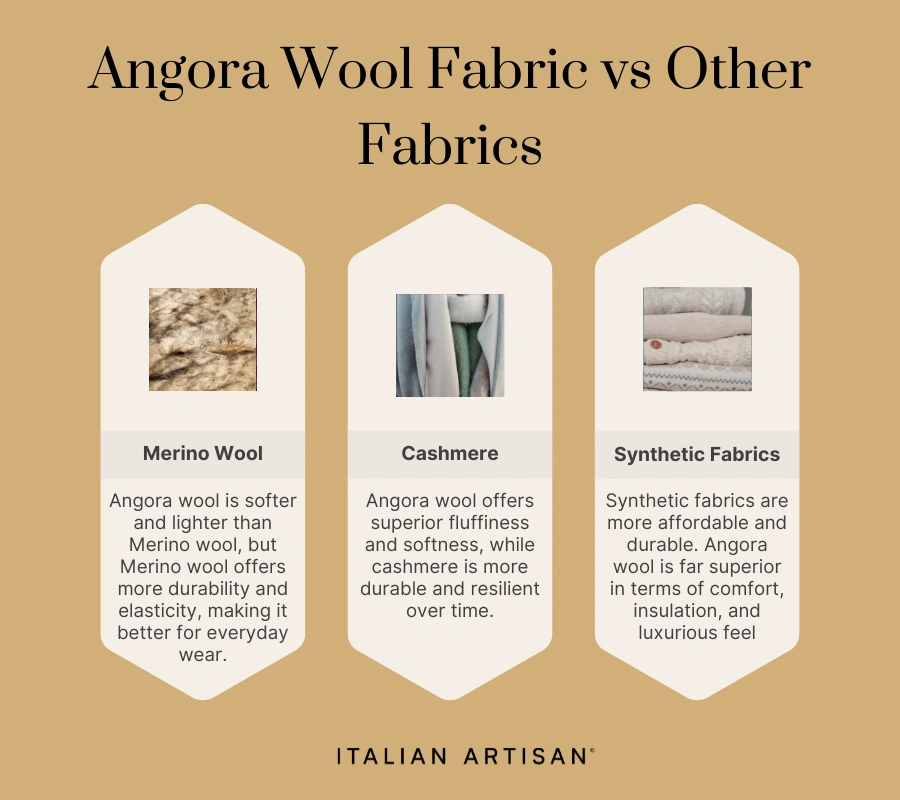
Key Takeaways:
- Synthetic fabrics fall short in terms of comfort and breathability, making Angora wool a better choice for those seeking luxury and natural performance.
- Angora wool is softer and lighter than both Merino wool and cashmere, but it requires more care and attention due to its delicate nature.
- While Angora wool offers superior insulation and luxury, Merino wool is more durable for everyday wear, and cashmere provides a balance of softness and strength.
How Angora Fabric Is Manufactured
The manufacturing process of Angora wool fabric combines traditional techniques with modern textile technology to create a luxurious, soft, and durable material. From the harvesting of the wool to the final fabric production, each step in the process contributes to the fabric’s unique texture, warmth, and luxury.
Key Steps in Manufacturing Angora Wool Fabric:
- Harvesting the Angora Wool
Angora wool is collected by shearing or combing the soft undercoat of the Angora rabbit. Unlike sheep wool, Angora wool is obtained by gently combing the rabbits to remove the fine, downy fibers. The process is labor-intensive and needs to be done carefully to avoid causing stress to the animals. - Cleaning and Preparing the Wool
After the wool is harvested, it is carefully cleaned to remove dirt, oils, and other impurities. The wool is then carded, a process that aligns the fibers and separates them for spinning. This step is crucial for ensuring that the wool is soft and ready for the spinning process. - Spinning the Yarn
The clean and carded wool is then spun into yarn. The fibers are twisted together to create a fine, smooth thread. The spinning process is carefully controlled to ensure that the yarn retains its softness and lightness. In some cases, Angora wool is blended with other fibers like merino wool or silk to improve its durability and elasticity. - Weaving or Knitting
Once the yarn is spun, it is woven or knitted into fabric. Angora wool can be used to create both woven fabrics (such as suiting and coatings) and knitted fabrics (such as sweaters and scarves). The weaving or knitting process determines the final texture of the fabric, ensuring it remains soft, light, and insulating. - Dyeing and Finishing
After the fabric is woven or knitted, it undergoes dyeing to achieve the desired color. The fabric may also undergo finishing treatments such as softening, anti-pilling, or anti-microbial treatments to enhance its texture and functionality. This step helps to further improve the quality of the fabric, making it more resistant to wear and longer-lasting. - Quality Control
The finished Angora wool fabric is carefully inspected to ensure it meets quality standards. Quality control ensures that the fabric has the right balance of softness, durability, and consistency. Any imperfections are corrected before the fabric is ready for use in fashion or textile products.

How the Manufacturing Process Affects Performance:
- Softness: The careful harvesting, cleaning, and spinning processes ensure that Angora wool fabric remains soft and luxurious, ideal for close-to-skin garments.
- Insulation: Angora wool’s fine fibers trap air, providing excellent insulation and warmth without the bulk, making it suitable for cold weather clothing.
- Durability: The blending of Angora wool with other fibers like merino wool can improve the fabric’s strength and elasticity, ensuring it remains long-lasting despite its delicate nature.
The manufacturing process of Angora wool fabric combines precision, care, and craftsmanship to produce a fabric that offers superior comfort, insulation, and luxury.
Produce your fashion collection with us
Common Uses in Fashion
Angora wool fabric is highly prized in the fashion industry for its luxurious feel, softness, and insulating properties. Its lightweight yet warm nature makes it ideal for a variety of applications, particularly in high-end fashion and winter apparel. The versatility of Angora wool fabric allows it to be used in everything from sweaters and scarves to outerwear and accessories.
Key Uses of Angora Wool Fabric in Fashion:
- Sweaters and Knitwear:
Angora wool is a popular choice for knitwear, especially sweaters and cardigans. Its soft texture makes it incredibly comfortable to wear, while its insulating properties ensure warmth without the heaviness of other wools. Angora wool sweaters provide a luxurious alternative to traditional wool, offering the perfect balance of warmth and lightness. - Scarves and Shawls:
The fine, fluffy texture of Angora wool makes it ideal for scarves, shawls, and wraps. These accessories are highly sought after for their softness against the skin, as well as their ability to provide warmth in cold weather. The natural sheen of Angora wool also adds an elegant touch to any outfit. - Coats and Jackets:
Angora wool is often used in luxury coats and jackets because of its excellent insulation and lightweight feel. It is particularly effective in creating stylish and functional outerwear that provides warmth without feeling bulky. The fabric is commonly used for winter coats or trench coats, offering both elegance and practicality. - Hats and Gloves:
Angora wool is used in the creation of winter accessories like hats, gloves, and mittens. These items benefit from the fabric’s softness and breathability, making them not only warm but also comfortable for prolonged wear. Angora wool hats and gloves are luxurious options for winter fashion. - Luxury Fashion:
Beyond everyday apparel, Angora wool is frequently used in luxury fashion collections. High-end designers incorporate Angora wool in exclusive garments and accessories to add an element of sophistication and softness. Its luxurious appearance and sheen make it a popular choice for premium fashion lines.

Why Choose Angora Wool Fabric in Fashion?
- Softness and Comfort: Angora wool fabric is incredibly soft and comfortable, making it perfect for garments that come into contact with the skin.
- Lightweight Warmth: The fabric offers superior insulation without the bulk of traditional wool, ideal for both winter wear and light outerwear.
- Timeless Elegance: With its natural sheen and luxurious feel, Angora wool fabric adds a touch of elegance and refinement to any fashion piece.
Angora wool fabric is not only practical but also a symbol of luxury and sophistication, making it a sought-after choice for those looking to invest in high-quality, stylish garments.
Understanding the Environmental Impact of Angora Wool Fabric
Angora wool fabric is prized for its luxury, softness, and warmth, but its production raises some environmental and ethical considerations. While Angora wool is a natural fiber, there are several factors related to its sourcing, production, and sustainability that need to be considered for consumers who prioritize eco-friendly and ethical fashion.
Key Environmental and Ethical Considerations:
- Animal Welfare
One of the primary concerns with Angora wool production is the welfare of the rabbits. The process of collecting Angora wool can sometimes be stressful for the animals, particularly if they are sheared improperly or treated poorly. In some cases, forceful plucking of the rabbits’ fur can lead to pain or injury.- Ethical Practices: To address these concerns, many responsible producers adhere to humane harvesting practices, ensuring that the rabbits are treated with care and respect. Mulesing-free practices and certified animal welfare standards are key indicators of ethical sourcing.
- Sustainability of Angora Wool Farming
Angora wool farming requires careful land management. While Angora rabbits are relatively low-maintenance compared to other livestock, their farming does have an environmental impact. The production of Angora wool can contribute to the consumption of water resources and land for growing feed. Additionally, if not managed sustainably, overgrazing can occur, which may harm the surrounding environment.- Sustainable Alternatives: Some producers have moved toward sustainable farming practices, such as organic farming or using recycled fibers to reduce their environmental footprint.
- Production Process and Chemical Use
Like many textiles, Angora wool fabric often undergoes various chemical treatments in the manufacturing process, such as dyeing and finishing. Conventional dyeing processes can use significant amounts of water, chemicals, and energy, contributing to pollution and the carbon footprint of the fabric.- Eco-Friendly Manufacturing: Many manufacturers are turning to more sustainable dyeing methods, including waterless dyeing and using non-toxic and biodegradable dyes to reduce the environmental impact.
- Durability and Disposal
While Angora wool fabric is durable, it is not as long-lasting as some other textiles, such as synthetic fibers or more resilient wools. Over time, Angora wool may start to pill or lose its shape if not properly cared for. Additionally, as Angora wool is non-biodegradable, it can contribute to landfill waste when discarded improperly.- Longevity and Care: To extend the lifespan of Angora wool garments, proper care and maintenance are essential. Consumers can ensure longer use by washing with care and repairing any damage promptly.
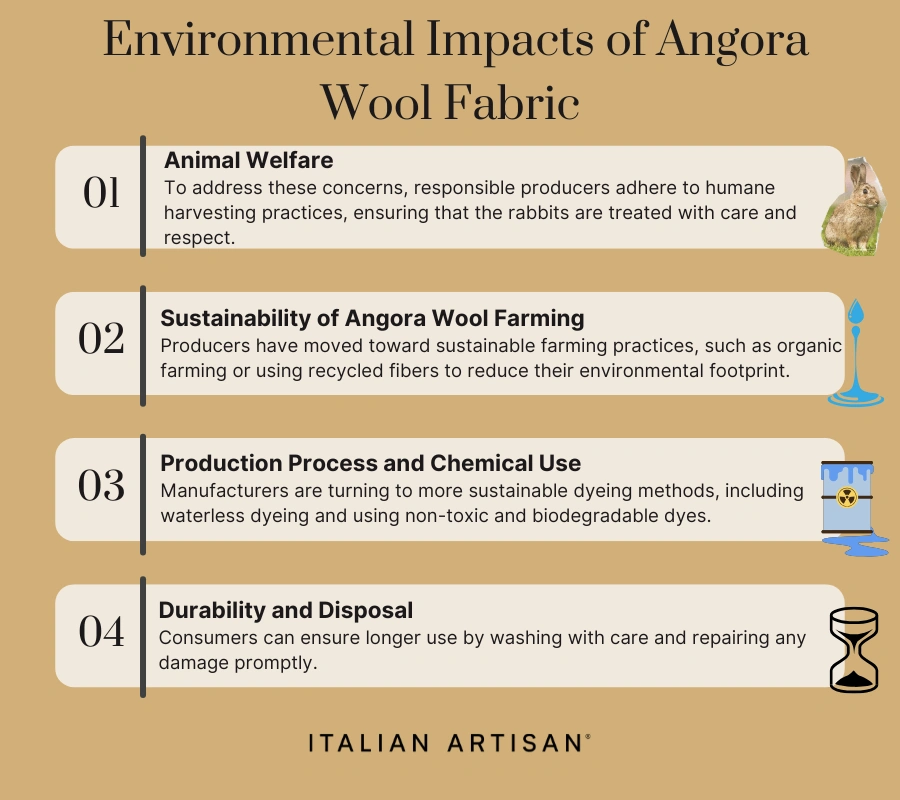
Exploring Price Points and Value for Money
Angora wool fabric is considered a luxury material, and its price reflects its premium quality. The cost of Angora wool can vary depending on factors such as fiber quality, sourcing practices, and manufacturing methods. While it may be more expensive than other types of wool, Angora wool fabric offers great value for money due to its softness, insulating properties, and durability when properly cared for.
Key Price Factors:
- Fiber Quality
The quality of the Angora wool used directly impacts the cost of the fabric. Higher-grade Angora wool, which is finer and softer, will generally be more expensive. Fabrics made from blended fibers, such as Angora and merino wool, may also increase the cost due to the added benefits of durability and elasticity. - Manufacturing Process
The manufacturing process of Angora wool fabric can be labor-intensive, particularly if the wool is ethically sourced and processed carefully. Ethical farming and humane harvesting practices can increase production costs, but these processes also contribute to the premium nature of the fabric. - Brand and Application
Luxury brands often incorporate Angora wool fabric into their high-end collections, leading to a higher price tag due to the prestige and design expertise associated with the brand. Similarly, garments made from Angora wool that offer additional features like anti-microbial treatments or UV protection may come at a higher price due to the added value.
Value for Money:
- Longevity and Durability: Despite its higher price, Angora wool fabric is an investment due to its long-lasting comfort and luxurious texture. With proper care, garments made from Angora wool can maintain their quality for years, making it a valuable addition to any wardrobe.
- Luxury and Comfort: The softness and lightweight warmth of Angora wool fabric provide a level of comfort and luxury that many other fibers cannot match. It’s a great choice for those who want premium quality and luxury in their fashion pieces.
- Versatility: From sweaters and coats to scarves and accessories, Angora wool fabric offers versatility across a wide range of fashion items, providing both elegance and comfort. The luxury feel and thermal properties ensure that it remains a go-to fabric for both casual wear and formal attire.
Conclusion
Angora wool fabric is a luxurious and versatile material renowned for its softness, lightweight warmth, and breathability. Derived from the undercoat of Angora rabbits, this fabric provides superior insulation while maintaining a delicate, fluffy texture. Its unique composition and high-quality fibers make it a preferred choice for luxury garments and fashion accessories that demand both elegance and comfort.
While Angora wool can be more expensive than other fibers, its long-lasting durability, breathability, and insulating properties make it a valuable investment for high-end apparel. With increasing attention to ethical sourcing and sustainable production, Angora wool fabric is becoming a more eco-conscious option for fashion-conscious consumers.
Whether used for sweaters, coats, or accessories, Angora wool fabric continues to be a symbol of luxury in both fashion and textiles. For those seeking unparalleled comfort and warmth, Angora wool is a top choice that combines performance with style.
FAQs
1. What is Angora wool fabric?
Angora wool fabric is made from the fine, soft undercoat of Angora rabbits. Known for its luxurious softness, lightweight warmth, and breathability, it is commonly used in high-end garments and accessories.
2. How is Angora wool harvested?
Angora wool is harvested by combing or shearing the undercoat of Angora rabbits. The fibers are carefully removed to ensure the welfare of the animal, with the finest wool being selected for fabric production.
3. How does Angora wool compare to other wools?
Angora wool is much finer and softer than merino wool and other wool types, providing a fluffy texture. While it offers superior luxury and warmth, it tends to be more delicate than merino wool, which is stronger and more elastic.
4. Is Angora wool eco-friendly?
The environmental impact of Angora wool depends on sourcing and production practices. Ethical producers focus on humane harvesting methods and sustainable farming practices. While Angora wool is a natural fiber, concerns around animal welfare and the use of chemicals in production should be considered.
5. Is Angora wool fabric durable?
Angora wool fabric is delicate and can require extra care. However, when properly maintained, it offers long-lasting durability and comfort. Blending Angora wool with stronger fibers like merino wool can increase its resilience.
6. How should I care for Angora wool fabric?
To maintain the quality of Angora wool fabric, it should be hand-washed or dry-cleaned. Avoid excessive heat or agitation, and store it in a cool, dry place to prevent damage or loss of shape.
7. Is Angora wool fabric suitable for sensitive skin?
Yes, Angora wool is often softer than traditional wool and is well-suited for sensitive skin. However, it’s essential to check for any allergy sensitivities to wool before wearing it, as some people may experience mild irritation.
8. Can Angora wool fabric be used in everyday wear?
Yes, Angora wool fabric is used in sweaters, scarves, coats, and gloves, making it suitable for everyday wear during colder months. Its soft texture and insulating properties offer comfort while maintaining a luxurious feel.
9. How is Angora wool fabric different from cashmere?
Both Angora wool and cashmere are luxurious fibers, but Angora wool is lighter and fluffier, offering superior warmth without bulk. Cashmere tends to be stronger and more durable but is generally more expensive than Angora wool.
10. Why is Angora wool fabric considered a luxury material?
Angora wool fabric is highly valued for its extreme softness, lightweight warmth, and luxurious sheen, making it a premium choice in high-end fashion. Its fine texture and comfort set it apart from other wool fabrics

